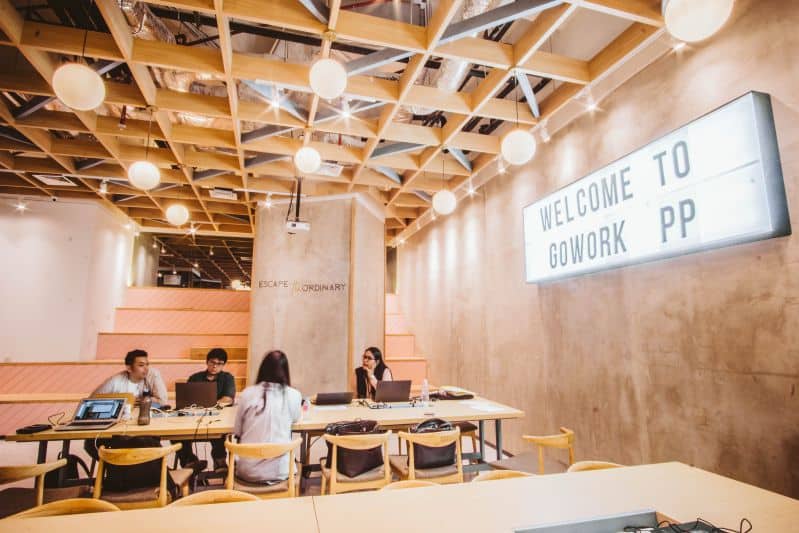The Co-working Trend, and Why It Is Here to Stay
In the last five years, the co-working trend has really caught momentum, and is now moving toward at an unprecedented speed. An industry report by JLL, which is titled “Workspace, Reworked: Ride the Wave of Tech-Driven Change”, predicted that flexible space will comprise up to 30 percent of corporate real estate portfolios by 2030. Its necessity grew as the number of employees that work remotely, along with independent workers such as freelancers and independent consultants, as according to a Gallup Report, showing that at least 43% of American employee work remotely “at least sometimes”, as the report states.
Today’s co-working trend has grown popular all-across the board. It used to attract only certain members of certain industries, especially tech industries. A Forbes article written by Ellevate states that co-working has attracted a new generation of entrepreneurs, consultants, freelancers, and corporate organizations, as they put to consideration the “overhead cost of their business and the value of collaborative work, open network, and a sustainable social environment”.
Peering deeper into the case, we can see that working in a co-working space is more than just about saving cost and opening your network for collaboration.
Co-Human Spaces
The title of this Harvard Business Journal article sums up perfectly the entire idea of this section: Coworking Is Not About Workspace – It’s About Feeling Less Lonely.
The United States is facing what the former Surgeon General of the United States, Vivek Murthy, call the “Loneliness Epidemic”. The more remote work becomes, the lonelier employees consequently become.
As such, these findings by the Small Business Labs has become even more relevant in tracking the importance of connecting with people in workplaces. 84% of the participants say they feel more successful by working at a coworking space. 82% stated that the space helps expand their professional network. But more importantly, 88% of the participants stated that they are happier, and kept them sane while working in a coworking space.
The members in our space, for example, often seen spending their time in the coworking area, talking with either one of our staff members, or other members. The topics discussed do not always relate to work — often it’s about the happenings in today’s pop culture, or even videogames.

The Values We Value
The same Forbes article written by Ellevate dispels the myth that co-working spaces are only for startups and entrepreneurs. It might be true that the identity created by modern co-working spaces promote youth and entrepreneurships, however, the data shows that enterprises love co-working spaces as much as startups. Some of our members are mature small enterprises which want to cut the hassle of managing an office space of their own entirely, such as Iwet Ramadhan (read about our interview with him here).
The coworking space, as we see it, is more about building a thriving community of network, providing our members with a platform, from which, we can help members rise. Co-working is more than just incubating potential startup companies, like many of the collaborative spaces strive to provide.
This manifesto signed by 1,700 other co-working spaces seemed to agree with our ideals, valuing collaboration over competition, participation over observation, and most importantly, “value ecosystem” over “value chain”
Substance over Style
When people look for a space to work, they look for a space that works in helping them work. A research done by the university of Michigan Coworking Project suggests that he combination of a well-designed work environment and a well-curated work experience are part of the reason people who co-work demonstrate higher levels of thriving than their office-based counterparts. Most importantly, however, giving people space to work and providing them more autonomy over their work can prove to be an incentive in encouraging commitment to one’s organization. They are more likely to bring their best energy and ideas to the office each day.
Co-working spaces do nothing more than to support such ideals. These spaces are often accessible 24/7, which will provide employees time to mull over and get their work done on their own time. They can pick to work on quieter private space, or in a more collaborative shared tables. They can even stop mid-work to take a gym break to move their body in-between of their workloads.

The Point of Collaboration
However, with this growth of trend, more and more spaces tend to forget the point of creating a co-working space. They strive to make their spaces cooler, and with more amenities, forgetting to curate the space and fostering the community in turn.
Qualitative findings by a management professor at the university of Michigan stated in this NPR Article that the explosive growth of the co-working are forcing the companies to constantly be under pressure to keep their members renewing, each and every month, over and over again. That means a blitz of marketing and operations, a massive feat of the industry to be accomplished.
As such, there is the importance for the co-working spaces not to overcapitalize on their members, and instead opt to foster the communities, and have the members feel like they are in an actual collaborative space instead of a glorified coffee shop.

